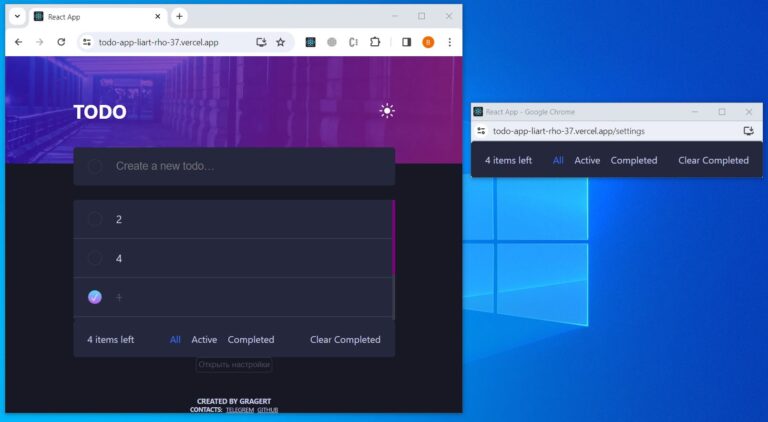why carry out and what to check first

In this article, we'll talk about why it's important to test emails, what elements should be tested first, and how to make the testing process easier.
Mailing testing refers to methods of testing emails before sending them. Email marketers are more likely to engage in content analysis and A/B testing of campaigns. For developers and testers who work with services that send transactional emails, email testing includes a broader cycle of actions – from analyzing HTML to ensuring email delivery.
What I will talk about in this article:
- The importance of email testing
- 4 pain points of email testing + workarounds
- Which elements are tested first?
Testing should not be left to chance, and here's why
According to statistics, more than 300 billion emails are sent every day. It’s hard to imagine how many emails from companies are sent out with errors. However, the fact that such messages negatively affect a brand's reputation and create a poor user experience is undeniable.
Debugging emails is the responsibility of the development/testing team to ensure that the marketing team can launch the campaign without problems.
Skipping testing leads to three main negative consequences:
1. Rendering errors = bad user experience
Unfortunately, not all email clients support HTML and CSS equally. For example, Outlook or the Gmail app for non-Google accounts do not display background images.
In addition, email clients often have specific requirements for the design of letters – for example, Yahoo Mail sets margins, and Gmail truncates letters heavier than 102 kB.
Since designers don't always consider the rendering standards of different email clients, it's the tester's job to ensure that all requirements are met.
This is why testing is so important – otherwise the recipient may see the email cut off, with broken layout, unresponsive design, or unsupportive content. As a result, a poor user experience is guaranteed, which can negatively impact loyalty.
2. Deliverability costs money.
Ensuring reliable communication between in-app email and end users is critical to supporting large user bases. Since many teams use email notifications to share passwords and notify about product updates, not being able to contact subscribers is a bad situation.
In email marketing, deliverability is the X-factor that determines whether a user will be able to access your important message. There are many criteria that determine Delivery Rate: the number of emails marked as spam, user interaction with emails, Bounce Rate, and others.

Before emails can be delivered, they must pass a security check. If you have ensured the delivery of your mailings, then no obstacles will prevent your message from reaching the recipient's inbox.
Ensuring smooth delivery is not an easy job and is usually the responsibility of a team of engineers. The tester monitors when and how many transactional emails the site or application sends. Verification is important because just a few broken links or a failed spam check is enough to undo months of effort.
Deliverability testing allows the QA team to:
- avoid spam traps (fake emails sent by providers throughout the Internet, which are often picked up by bots and included in the subscriber base)
- Find out which elements of the email infrastructure are not configured correctly (IP, DNS records, email authentication records, etc.)
- make sure there are no spam triggers in the content.
If you don't check for spam and deliverability, important emails won't reach the end user. How can a user reset a password or receive a registration link if an unverified email goes somewhere wrong? Undeliverable emails can cause a company to lose customers and experience other business failures.
3. Reputation suffers
One of the latest sustainable trends is personalization. However, when sending messages with many dynamic tags, the situation often gets out of control.
Recipients are no longer particularly surprised when they receive an email with incorrect tags or text like “Hi, [имя пользователя]” For brands, such missteps kill the conversion rate of the entire marketing campaign and negatively impact their reputation. The reason is simple: there is no second chance to make a first impression. Even if you make a mistake just once, some subscribers will mark the email as spam or leave negative feedback. And their brand will be associated with broken emails only because someone didn’t do HTML/CSS testing.
4 pain points of email testing and how to deal with them
We have described the three main negative effects of sending error emails. It's time to understand the pain points of testers who bravely struggle with debugging mailings.
We don't want to judge. For years, email testing workflows have had many flaws that make the process too manual, slow, and inefficient.
There are real workarounds that address testing pain points. Let's look at how to deal with the most annoying inconveniences.
1. Test emails are sent to real users
This annoying problem is due to the fact that combat domains are used for testing. As a result, you may accidentally send a test message to your list of subscribers.
Additionally, using a production server to run tests increases the volume of submissions for the domain and reduces domain authority.
Making sure you don't mistakenly send emails to real users is easy if you use a separate testing environment. There are two ways to safely test:
- Testing in a development environment using the integration API.
- Using tools that simulate the operation of real SMTP servers with the ability to check common SMTP ports and other infrastructure elements.
2. Low deliverability (or ending up in the Spam folder)
If your preliminary emails end up in spam, this is not necessarily a red flag. Before alerting your marketing team and double-checking your infrastructure, check the following:
- Alt text (“fish”) has been removed from the email. When sending test emails, make sure that the text of the email exactly matches what the user should see. Artifacts such as “Lorem Ipsum dolor” trigger spam filters and reduce the efficiency of test email delivery.
- You open your own test emails. If you send test emails to your own address and do not interact with them, providers will mark the emails as irrelevant and start sending them to spam.
- The sender and recipient addresses do not match. To successfully deliver letters, email clients require that the sender and recipient addresses be different. Therefore, when sending a test message to yourself, choose a different email address than the one from which you are sending the test message.
- There is a link to unsubscribe. Mailings that do not have an “Unsubscribe” link have a 99.9% chance of being rejected or marked as spam.

Adding an unsubscribe block to the footer gives subscribers the opportunity to unsubscribe without blocking the sender, which protects the company's reputation.
3. Display errors and incompatibility with different devices
Another obstacle that email testers face is that emails display differently in different email clients or on different types of devices. When checking the body of an email, you should consider the following client characteristics:
Gmail:
- Images are supported by default.
- Emails larger than 102 kB are automatically trimmed.
- Tag
Auto-scale emails on iPhone (images will appear off-center, so it's best to put “padding:0” in .
The minimum point (font size) is 10.5pt for body text and 16.5pt for headings to ensure readability on smartphones.Outlook:
- No support for background images.
- There is no support for interactive elements such as forms or checkboxes.
- There is no support for HTML5 videos and GIFs.
- Limited support for padding.
4. Low testing efficiency
In the 2000s, email testing was manual, static, and tedious. Testing teams had to create emails from scratch and send them to test addresses. The good news is that most of these steps can be easily automated today.
Here are a few tools that can help you spend less time testing individual email elements:
- Email Preview: Litmus
- Email servers: GMass
- Email API: Mailosaur
- Spam check: SpamAssassin
- Deliverability: Mail-Tester
- HTML Check: HTML Email Check
- Browser automation system: Selenium
If you want a full-featured testing solution that will allow you to test all the technical aspects of your email campaign, including SMTP, API, HTML/CSS, consider collaborative tools like Mailtrap.
Key elements to check
Now that you know why you shouldn't avoid email testing and understand how to overcome the main obstacles, it's time to create a step-by-step strategy that will ensure high deliverability and flawless email rendering.
Here are the main types of email tests.
1. SMTP Monitoring
SMTP errors are a common culprit for email delivery problems or failures of the entire email infrastructure. Here are the problems you need to pay attention to:
- The firewall is blocking communication.
- The server response is taking too long.
- The SMTP server is connecting with the wrong hostname.
- SMTP does not support the given commands.
To make SMTP evaluation easier, testers use tools like Web Biz or Wormly.
2. API testing
API testing allows developers to test emails without leaving the development environment. Using the API you can:
- Automate the process as much as possible.
- Receive emails in code.
- Extract and check the contents of a test letter.
- Apply pattern matching.
- Send test emails with attachments.
Different programming languages use different scripts to test email APIs. To make this process easier, try using tools like Mandrill or MailSlurp.
3. Local sending of test emails
Another way to test email is to set up a local server. This way, testers take the shipping burden off the production environment and separate testing from the actual campaign.
Testing your email on a local server is a good way to ensure you don't send a test batch to subscribers by mistake. Can be used as tools Mailhog or Mailcatcher.
4. Deliverability and spam testing
As we already mentioned, deliverability and spam testing helps you monitor the reputation of your domain and IP address and find out whether the sender address is blacklisted by providers.
May be useful here Mail-Tester or GlockApps.
Conclusion
In the QA community, email testing often takes a backseat to other types of testing. In fact, don't underestimate email debugging and infrastructure testing. Try the approaches mentioned in this article. Tell us what tools you use to test email campaigns.






